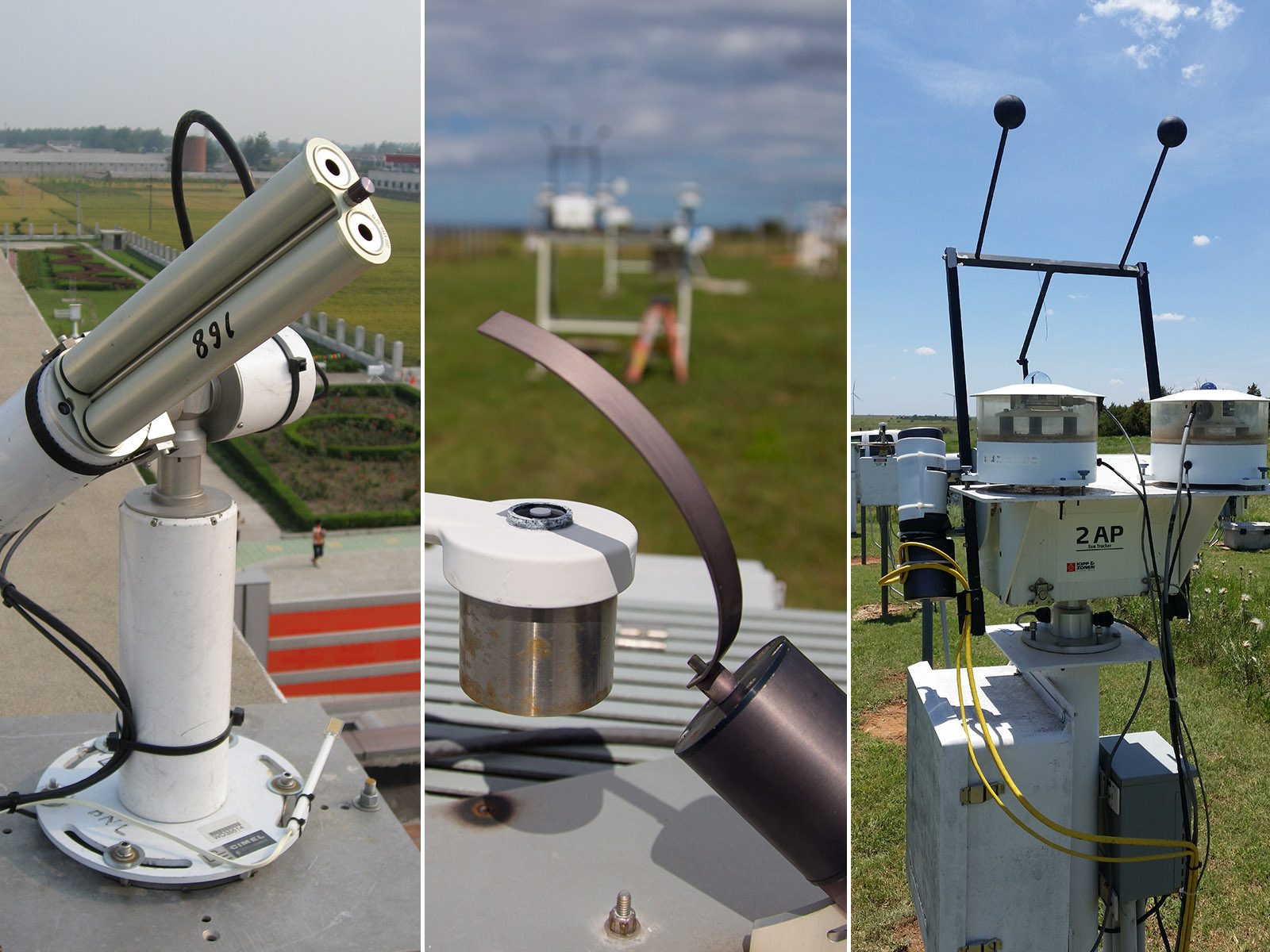Successfully combining two decades of aerosol data
Submitter
Kassianov, Evgueni — Pacific Northwest National Laboratory
Area of Research
Aerosol Properties
Journal Reference
Kassianov E, E Cromwell, J Monroe, L Riihimaki, C Flynn, J Barnard, J Michalsky, G Hodges, Y Shi, and J Comstock. 2021. "Harmonized and high-quality datasets of aerosol optical depth at a US continental site, 1997–2018." Scientific Data, 8(1), 82 (2021), 10.1038/s41597-021-00866-2.
Science

Figure 1. A new merged data set combines measurements from four instruments to produce more comprehensive records of aerosol optical depth.
Composite image by Shannon Colson from images courtesy of the U.S. Department of Energy Atmospheric Radiation Measurement user facility|Flickr.
Aerosol optical depth (AOD) is a measure of how much aerosol particles prevent direct sunlight from reaching the ground. AOD products are typically provided by several potentially different instruments and often have different accuracies and temporal resolutions. Generating a high-temporal-resolution merged data set for a 21-year period (1997-2018) using data from four ground-based instruments deployed at the Southern Great Plains atmospheric observatory helps preserve the advantages (high quality) and reduce the disadvantages (patchy records) of the individual data sets. This generation addresses: (1) the varying data quality and resolutions of individual AOD records and (2) the uncertainty of the merged AOD data and its relevance for users.
Impact
Merging this first-of-its-kind AOD data set with other products can help provide a comprehensive picture of how aerosol loading relates to specific climate-associated factors. For example, combining this data set with wildfire data would make it possible to correlate AOD changes with wildfire history and improve our understanding of the relationship between wildfires and aerosol burdens. Furthermore, using the AOD data set in concert with surface radiation information could help reduce the uncertainties in radiative forcing over different time scales due to aerosol perturbations.
Summary
AOD measurements from individual instruments can be considered as a group of records with overlapping time intervals. Combining these records into a single product can yield AOD data with excellent time continuity compared with measurements from a single instrument. This work demonstrates how to straightforwardly obtain the combined AOD and its uncertainty using an intuitively understandable approach that focuses on user-specified needs for the first time.
The combined two-decadal data set successfully builds on the accuracy of the individual AODs, their extended measurement duration, and their high temporal resolution. Thus, this data set—with its clear data format and public access—will allow users to analyze the variability of aerosol loading over a range of time scales and demonstrate the importance of this variability in forcing climate change. An additional benefit for researchers is that the combined AOD data set can be aggregated to coarser time scales (e.g., daily, monthly, or annual averages) to become consistent with those used in model predictions and other relevant data products.
Keep up with the Atmospheric Observer
Updates on ARM news, events, and opportunities delivered to your inbox
ARM User Profile
ARM welcomes users from all institutions and nations. A free ARM user account is needed to access ARM data.


















